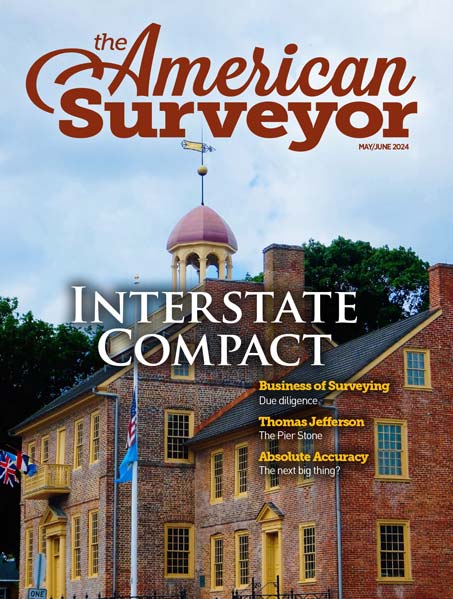Surveyors have been going into the wilderness of the Coast of the Gulf of Mexico for hundreds of years. They have measured and left their fair share of reference points, especially in south and southeast Louisiana. Only recently has the ability to answer the question, “How high is it?” become good enough to show what is happening. The Louisiana Spatial Reference Center (LSRC) hosted the Louisiana Height Modernization Summit Wednesday June 16 at the Pennington Conference Center in Baton Rouge.
Louisiana Height Modernization Summit
by J. Anthony Cavell, LS
Surveyors are an interesting group. Send some into the wilderness and they will return with stories, observations, measurements, maps and reference points. Surveyors have been going into the wilderness of the Coast of the Gulf of Mexico for hundreds of years. They have measured and left their fair share of reference points, especially in south and southeast Louisiana. Only recently has the ability to answer the question, “How high is it?” become good enough to show what is happening.
With that in mind, the Louisiana Spatial Reference Center (LSRC) hosted the Louisiana Height Modernization Summit Wednesday June 16 at the Pennington Conference Center in Baton Rouge. The event was moderated by Kristen Wray, LSRC Assistant Director. There were four morning presentations: NGS Perspectives on Height Modernization Program by Gilbert Mitchell, NGS Chief of Geodetic Services Division; LSRC Activities and Purposes of Meeting by Roy Dokka, PhD, LSRC Director; Statement of Local Problem by Ronnie Taylor, NGS Interim La. State Geodetic Advisor and Case Study of East Baton Rouge Parish by Rodney Walsh, SJB Group.
The presentations by Mitchell and Taylor explained the history, development and efforts necessary to create and maintain the scientific effort of Height Modernization. Walsh showed in some detail the planning and execution of the effort on the parish (county) level. The most newsworthy comments and information came during Dr. Dokka’s address which was perhaps the clearest explanation to date of the problem faced by Louisiana and the Gulf Coast.
Dokka shared several graphs depicting the information gathered showing the clear trends of deep layer subsidence separate and apart from surface compaction and/or erosion. He showed the dynamic tectonic activity which exceeds more notorious activity in California. There is both bending, like a springboard, as well as sliding along faults. There are areas where subsidence rates exceed a foot a decade!
The important benefits of marsh replenishment and sediment diversion from the Mississippi River were lauded but the fact that areas of development and occupation will not be raised by such methods was also pointed out. Dokka said, “If we want to protect the population and infrastructure we will need to elevate the roads, raise the levees in the southeast and built levees in the southwest, and we need accurate heights to know how high.” He added, “Requiring, by law or regulation, that all elevations shall be reported as updated NAVD88 heights would be a giant step in the right direction.”
After lunch the meeting resumed with breakout sessions. The first was divided by geography; the second by areas of practice to examine the particular interests in Height Modernization of each. There was general agreement on the urgent need for this research because of the immediate impact subsidence has on everyone and everything in the state, especially along the Gulf Coast. As usual, sufficient funding and sources of revenue were concerns expressed by all.
The morning sessions were followed by a luncheon during which time the LSRC Steering Committee had a working lunch meeting to plan its agenda. Members of the Steering Committee include: Bill Fenstermaker of C. H. FEnstermaker and Assoc., Lafayette, LA; Dag Nummedal of University of Wyoming, Laramie ,WY; Walter Baumy of US Army Corps of Engineers, New Orleans District; Kenny Smith of T. Baker Smith and Son, Houma, LA; Wilfred Berry of SJB Group, Inc., Baton Rouge, LA; Katherine Cargo of Orleans Parish Communications District; Windell A. Curole of the South Lafourche Levee District; Virginia Burkett of the National Wetlands Research Center, Lafayette, LA; and J. Anthony Cavell, PLS, of LSPS, from Lafayette, LA.
On June 17, the day after the summit a Gulf of Mexico Region meeting was held to coordinate height modernization. Representative of government agencies, universities, and private practice were present. They came from California, Florida, Washington D.C., Arkansas, Texas, Alabama, Mississippi, Louisiana and elsewhere. Strategies for advancing height modernization, the varying needs and ideas for efficient usage of limited resources were exchanged.
